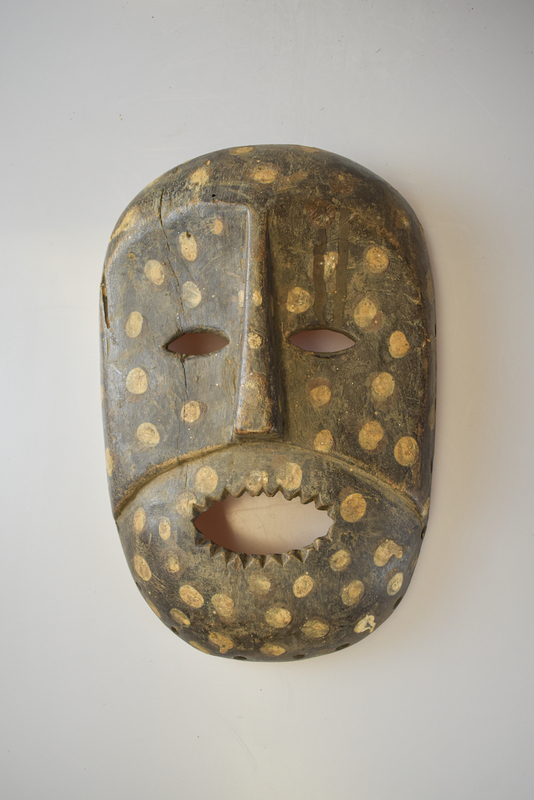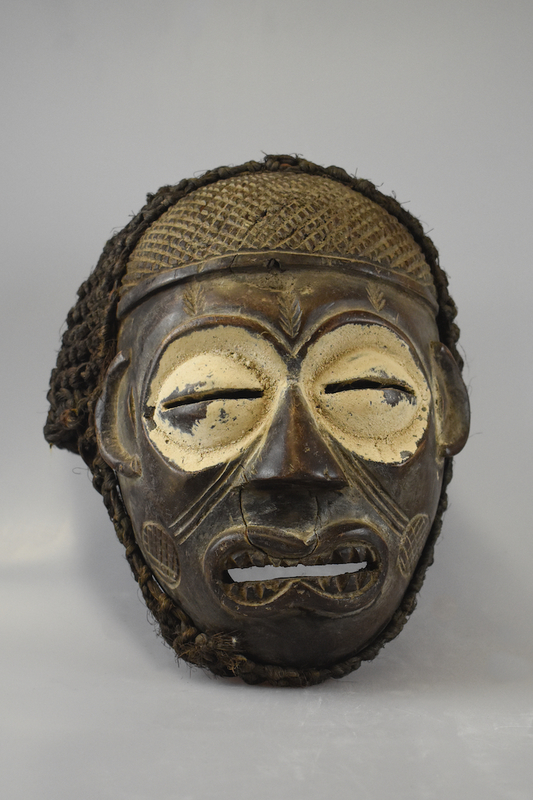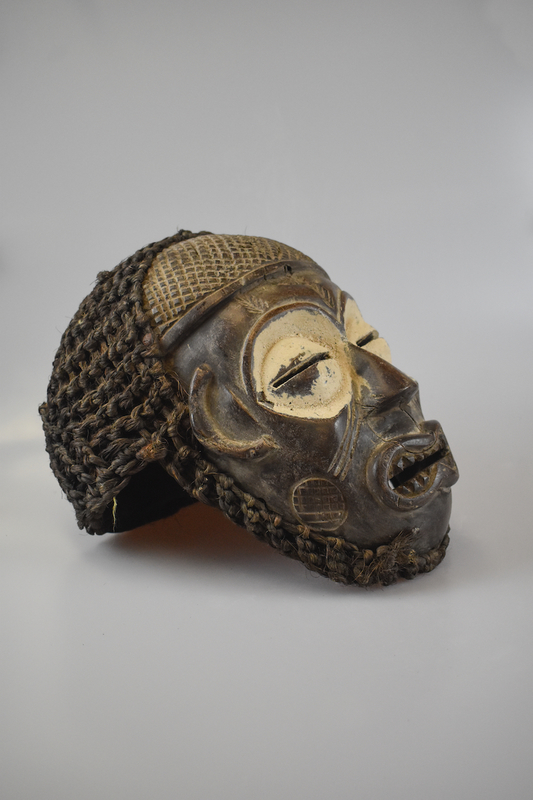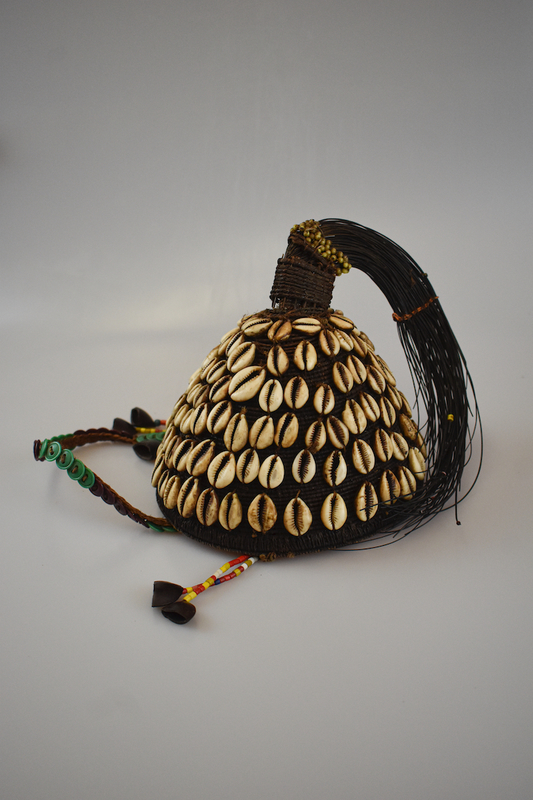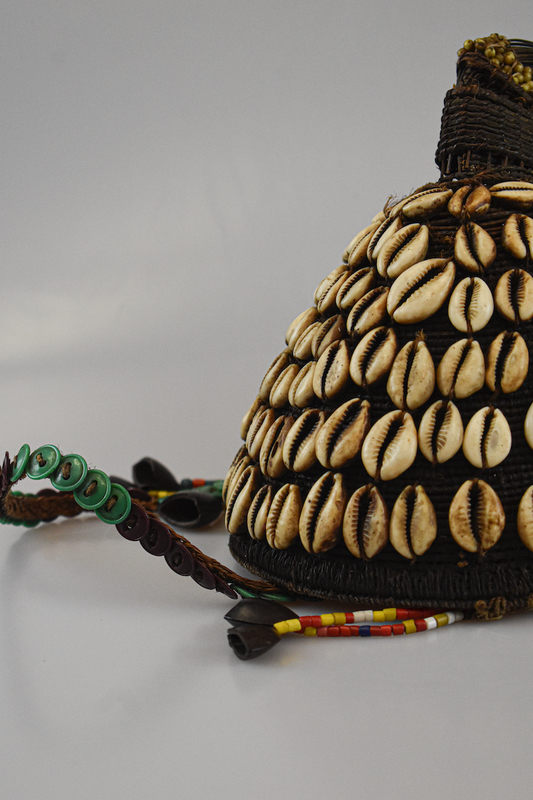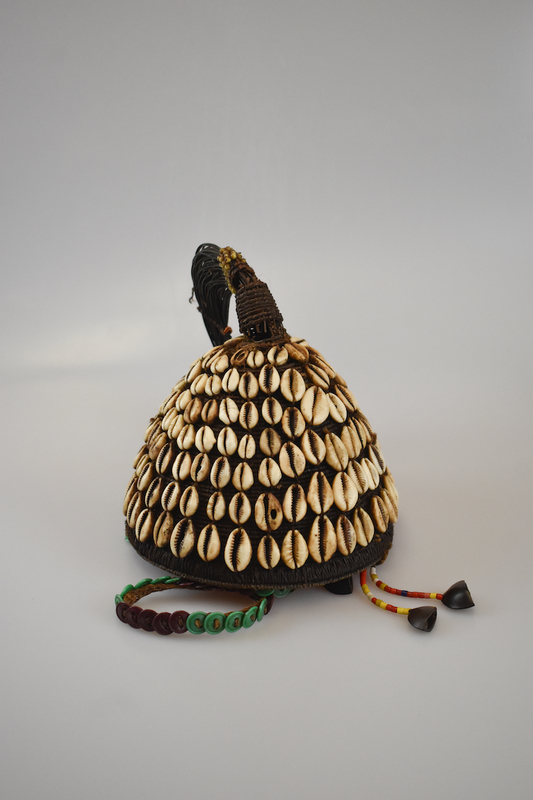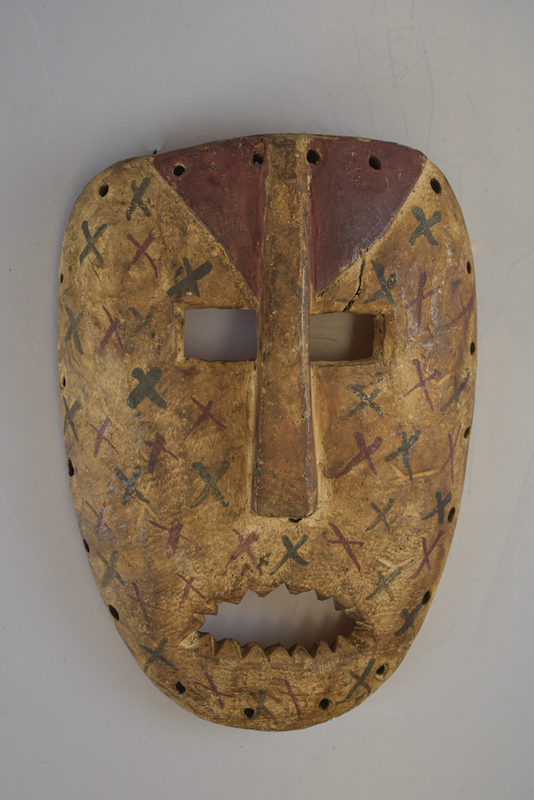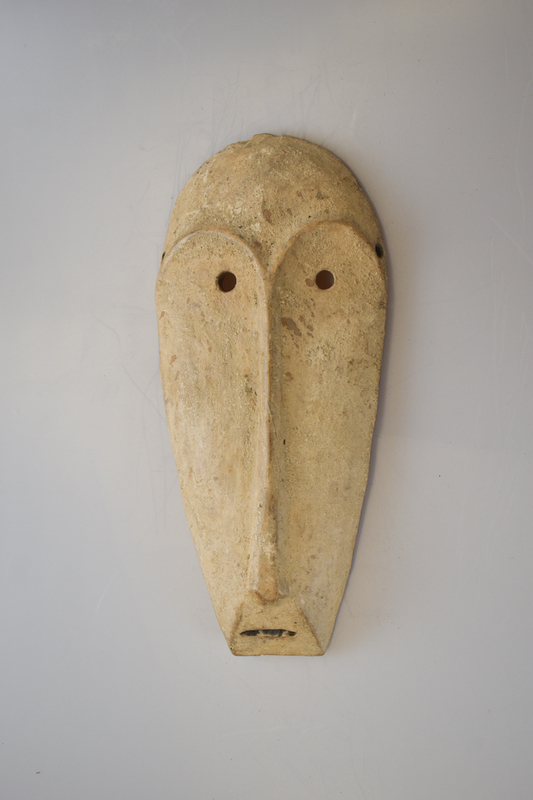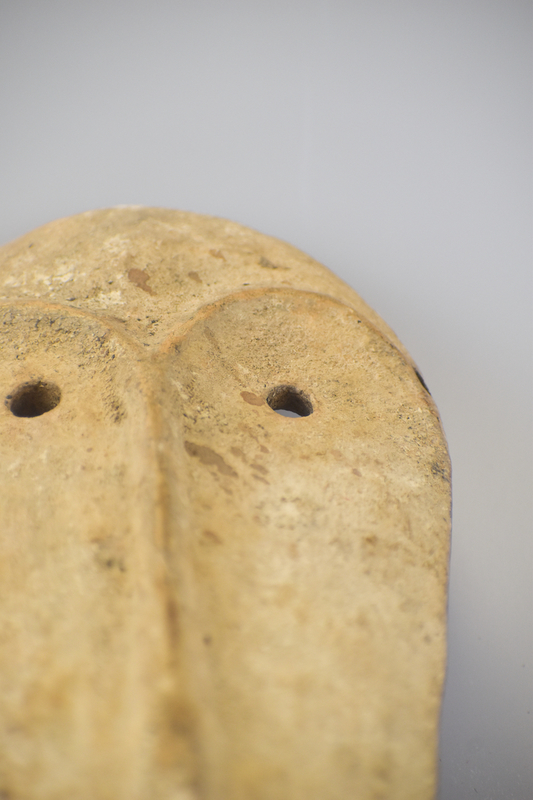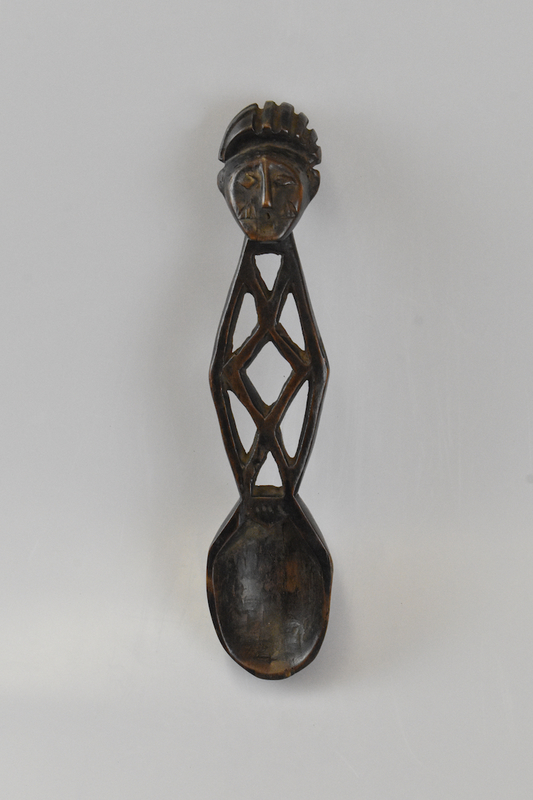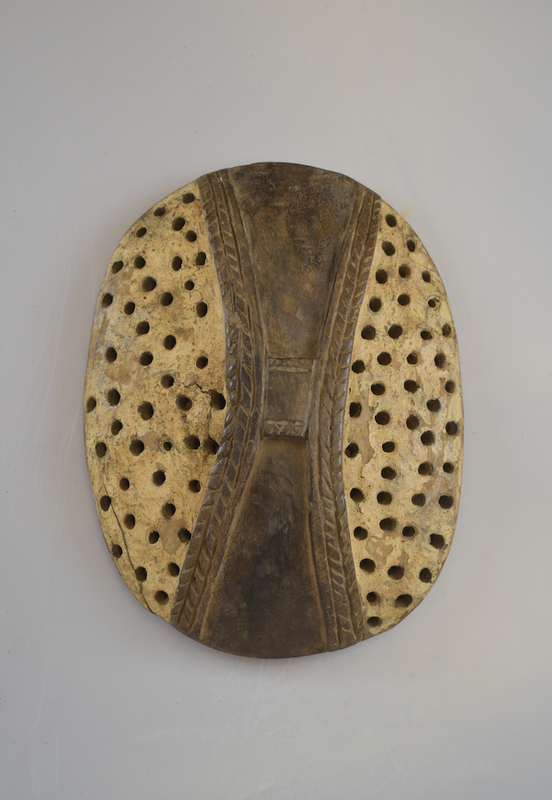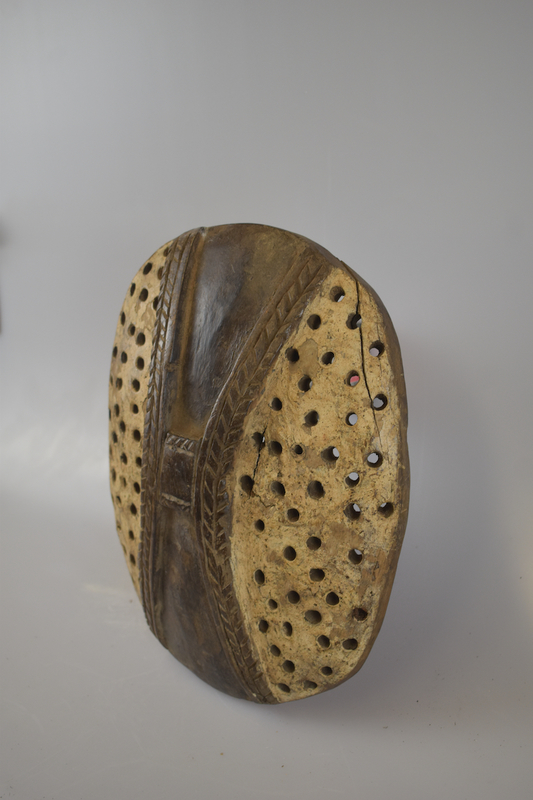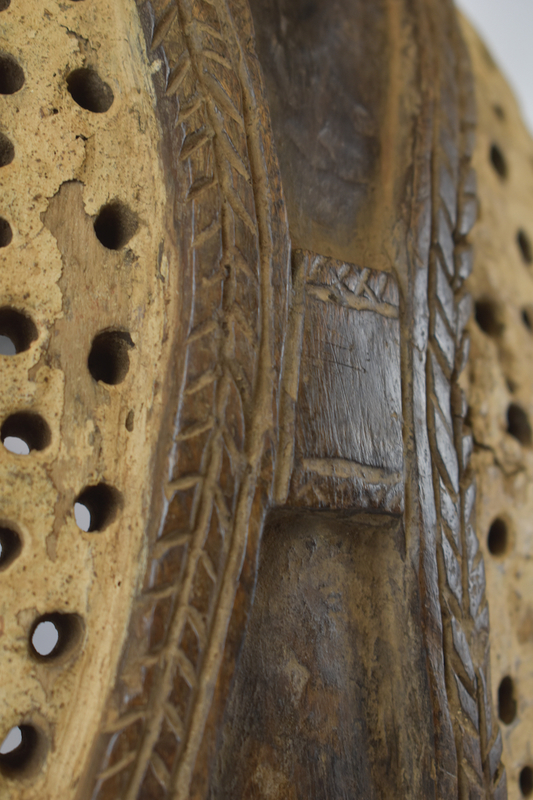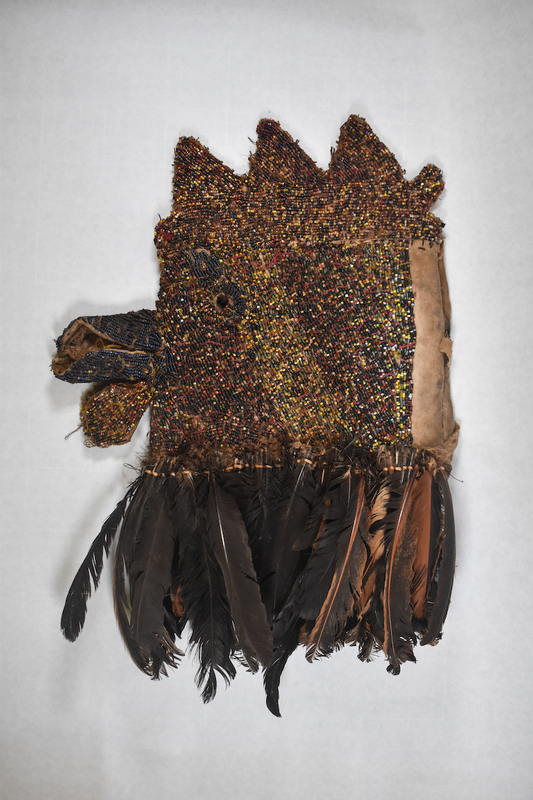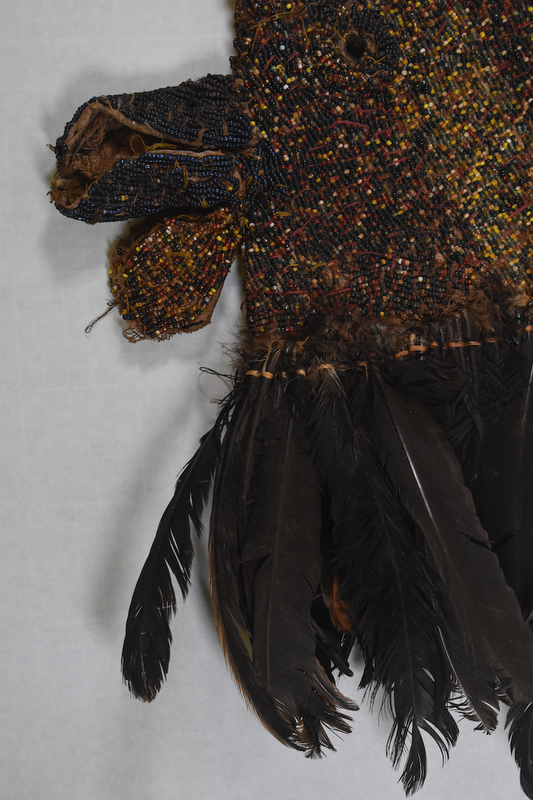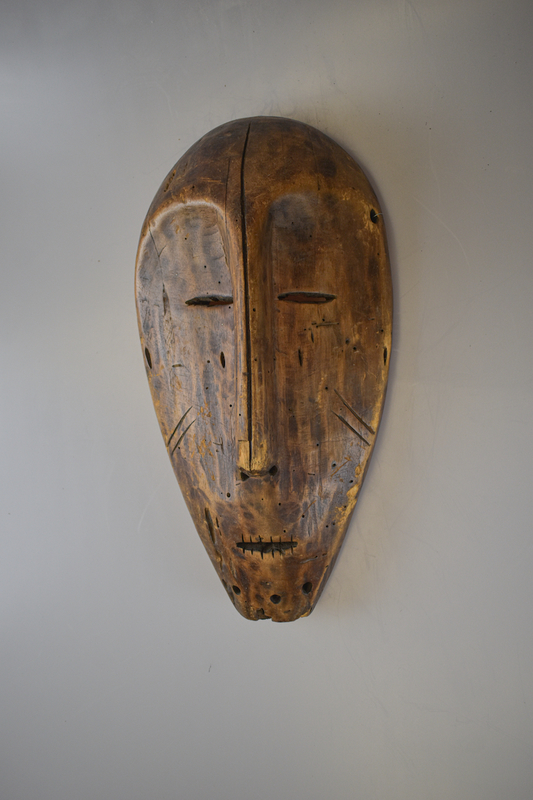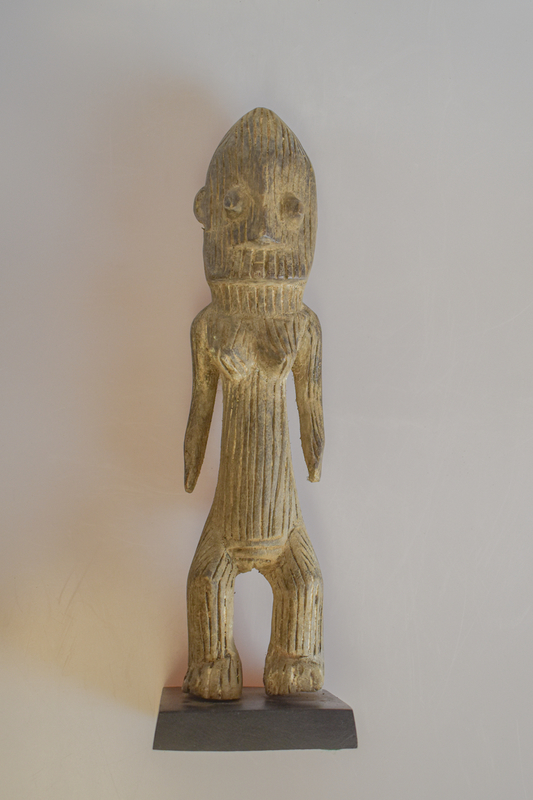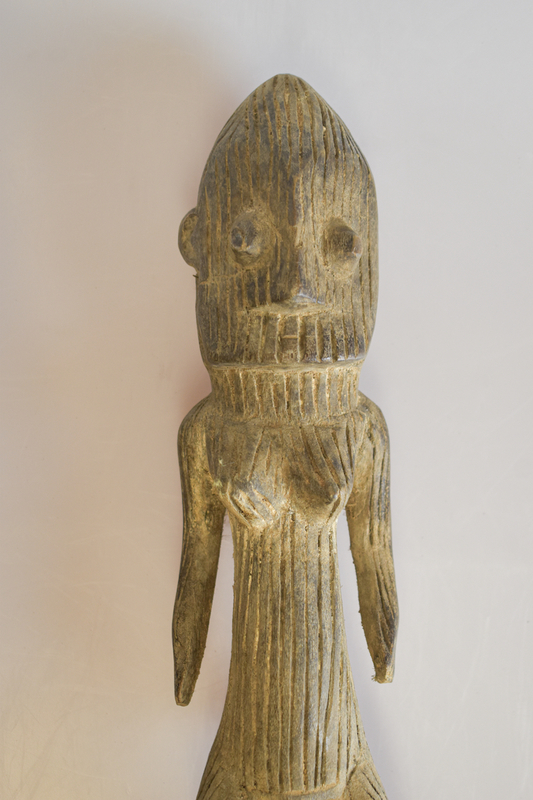Home
Welcome to the African Art Collection at FSU! This collection is dedicated for students to explore African arts, religions, philosophies, and cultures through ritually and socially significant objects such as masks, headrests, and utensils. Highlighting the diverse lives of groups from Nigeria, Ivory Coast, Ethiopia, Gabon, Rwanda, Tanzania, and the Democratic Republic of the Congo, the collection promotes a greater understanding of diverse cultures and their impact on the world. The collection is made possible by the generous donations of James and Beatrice Anderson and Thomas Carroll.

-
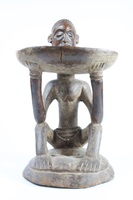
Sitting Figure Stool
A caryatid stool features a head emerging from the top of the seat, with its lower half showing a more faded patina than the upper part. The seat is decorated with embedded coins. The Tabwa caryatid figure is unique and part of the royal regalia, serving as a vessel for the high-ranking ruler's spirit. -
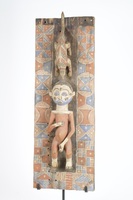
Red and Blue Decorated Wall Panel with Chameleon
A polychrome wall panel displays a stylized sculpture figure and a chameleon in the center, flanked by decorative red and blue geometric patterns. The panel's stylized, high-relief designs serve as a visual language found in stories or proverbs related to the initiation process. Such panels may be used to teach moral and social values to young adolescents who are about to be initiated. -
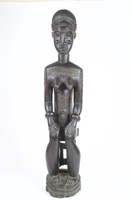
Sitting Female Figure
A seated female figure is overall covered with a darkened patina. The Baule people believe that every man or woman has a "spouse" in the spirit world—an individual with a name revealed through divination. Geometric scarification on her torso, chest, upper arms, and face, accompanied by a smooth, raised hairstyle, is typically shown in images of spirit wives. -
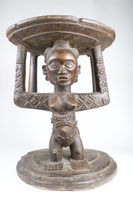
Prestige Stool
A prestige stool depicts two identical female figures with their arms raised and facing outward. Their prominently stylized breasts and scarification along their extended arms highlight the female body's vital role as a spiritual vessel that embodies divine kinship in Luba society. The artistic refinement of the female form through intricate skin decoration and hairstyle symbolizes the civilization and sophistication that Luba rulers promote within their community. Although it was designed as a stool, it has also been used as a sacred emblem stored in a king's palace. -
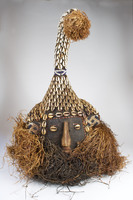
Decorated Wooden Face Mask
The Kuba Mukyeem mask is is intricately decorated with various materials, such as the glass beads creating facial features and patterns throughout the mask, along with the cowrie shells coating the surface. The protrusion from the forehead resembles an elephant's trunk, establishing a sense of power and stability for the masker. This mask was to be worn during an important ceremony recounting the Kuab creation myth. According to the myth, the first human known as "Shyaam" was the the creator of the Kuba Dynasty and civilization. -
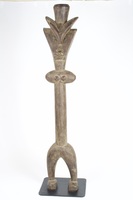
Elongated Figurative Statue
An elongated, figurative statue featuring short, bowed legs and a long torso. Its head is triangular with a deep, angled ornament on top and flat facial features. It is highly stylized and used at the end of ceremonies, following the masquerades. It may represent an ancestor figure. -
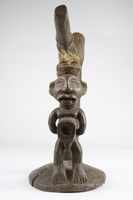
Hanged Figure
A figurative sculpture depicting a hanged man with arms tied behind his back. Facial features are exaggerated and stylized, with a fiber headdress on top of his head. This sculpture is seen as a cult figure that could be used to warn criminals who might face the fearful penalty for their unethical actions. -
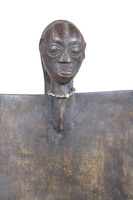
Ceremonial Chair with Triangle Patterning
The Tawba ceremonial chair is highly decorated with triangular patterning surround the base of the chair and back side. The bust at the top of the seat has thinly carved scarification patterns and a stylized coiffure. The neck of the bust blends seamlessly into the seat, connecting the two objects as one. The seat has several marks and scratches, showing the chair was most likely functional as well as decorative. -
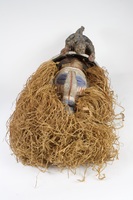
Kholuka Mask
The Yaka "kholuka" mask is carved of wood with raffia surrounding the head. The nose is turned upward, the mouth is open with individually articulated teeth, and the face is brightly painted creating an expressive image. This facial construction is used to depict Yaka sexualtiy and spirituality. Atop the head is lizard constructed of tightly joined fabric pieces, covered in pigment of similar coloration to the face. The mask is representative of those used during initiation rituals like the "n-khanda" ceremony marking the transition from boy to man. -
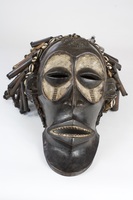
Pwo Mask
The Chokwe Pwo, or Mwana Pwo mask is made of wood with both white kaolin and a oils to patinate the surface. The eyes are narrow in large sockets, with scarification patterns running downward over the cheeks to signify tears. This mask resembles a maternal figure in a highly emotional male initiation ceremony. The mouth is wide, with teeth lining the top and bottom lip. Under the mouth, the chin juts outwards with a rounded edge. Atop the head, a hairstyle of beads drapes downward, connected to the forehead by a thin line of cowrie shells. -
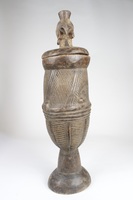
Large Carved Wooden Vessel
The large vessel is carved of wood with a dark patina, along with red pigment and white kaolin on the surface. Thinly incised lines cover the surface of the vessel creating intricate patterns. The lid has two busts of a chicken on either side of a cylindrical handle. The chicken may be in reference to animal sacrifice, as the killing of the chicken during rituals was commonly understood to protect from illness and other troubles. -
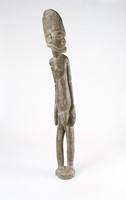
Figure in Patinated Wood
The male figure is carved from one piece of wood, as if stemming from the rounded base beneath its feet. The figure is thin with a vertical emphasis. Common characteristics of Dogon sculpture can be seen through the bend in the knees and the turned head. Carved statues such as the one pictured were often ancestral figures placed on altars.
